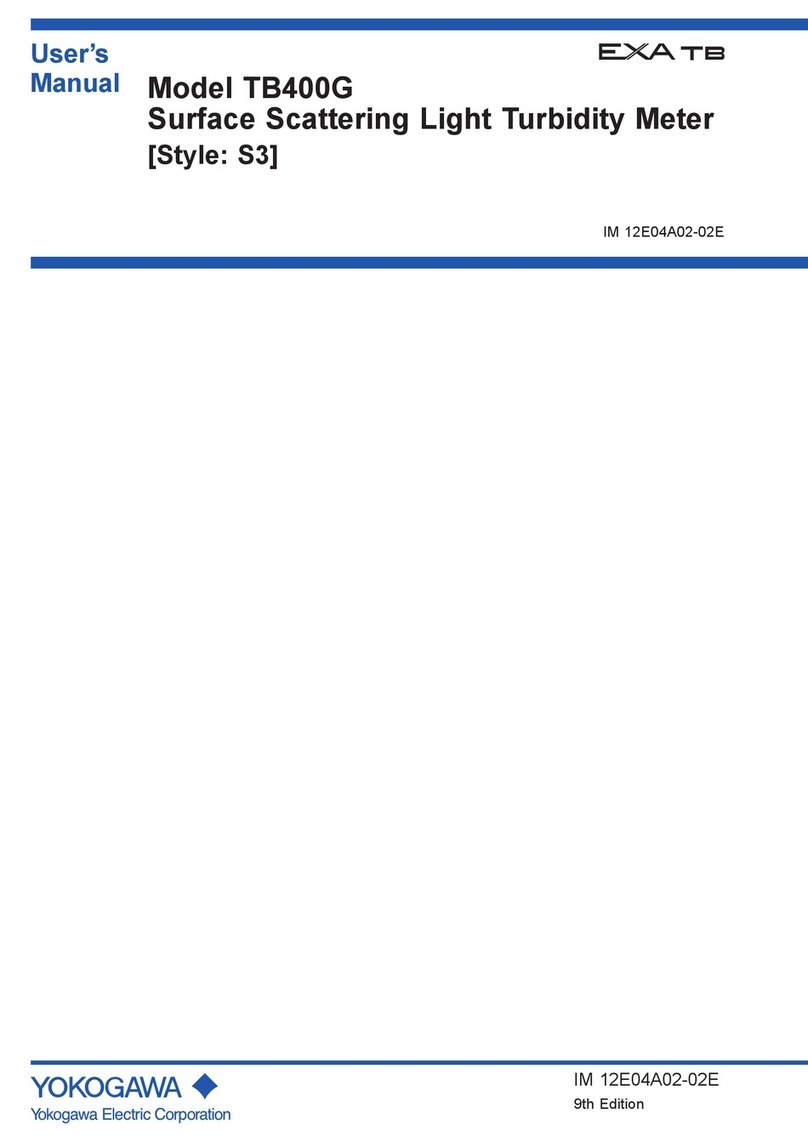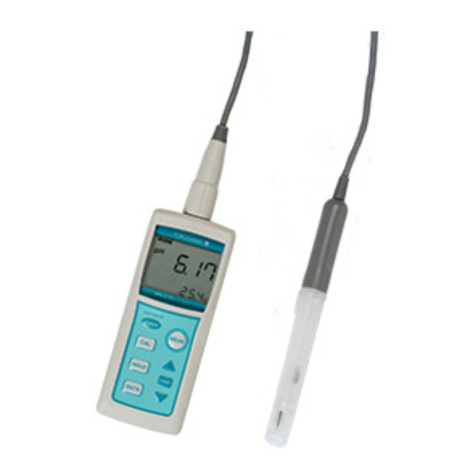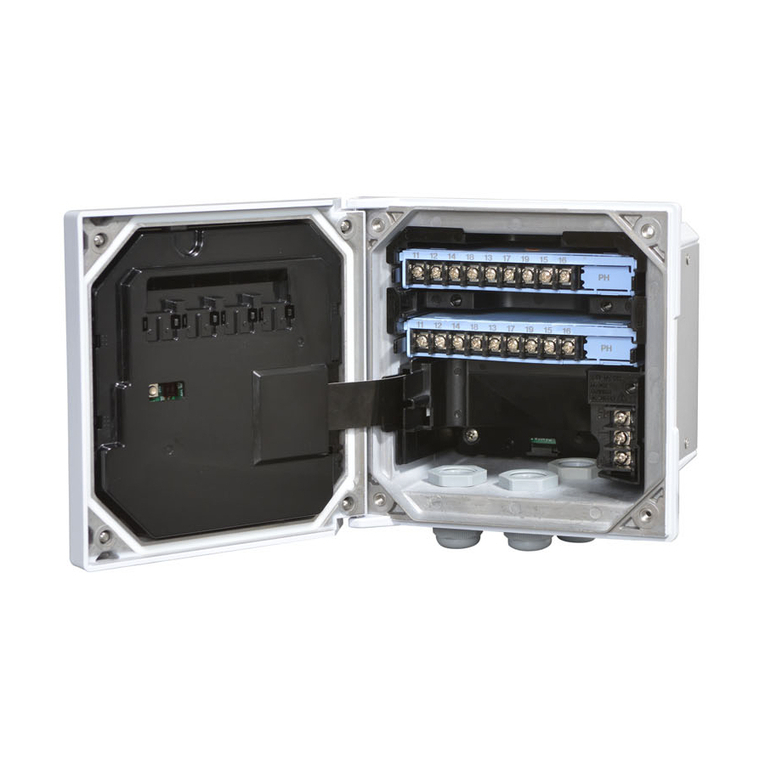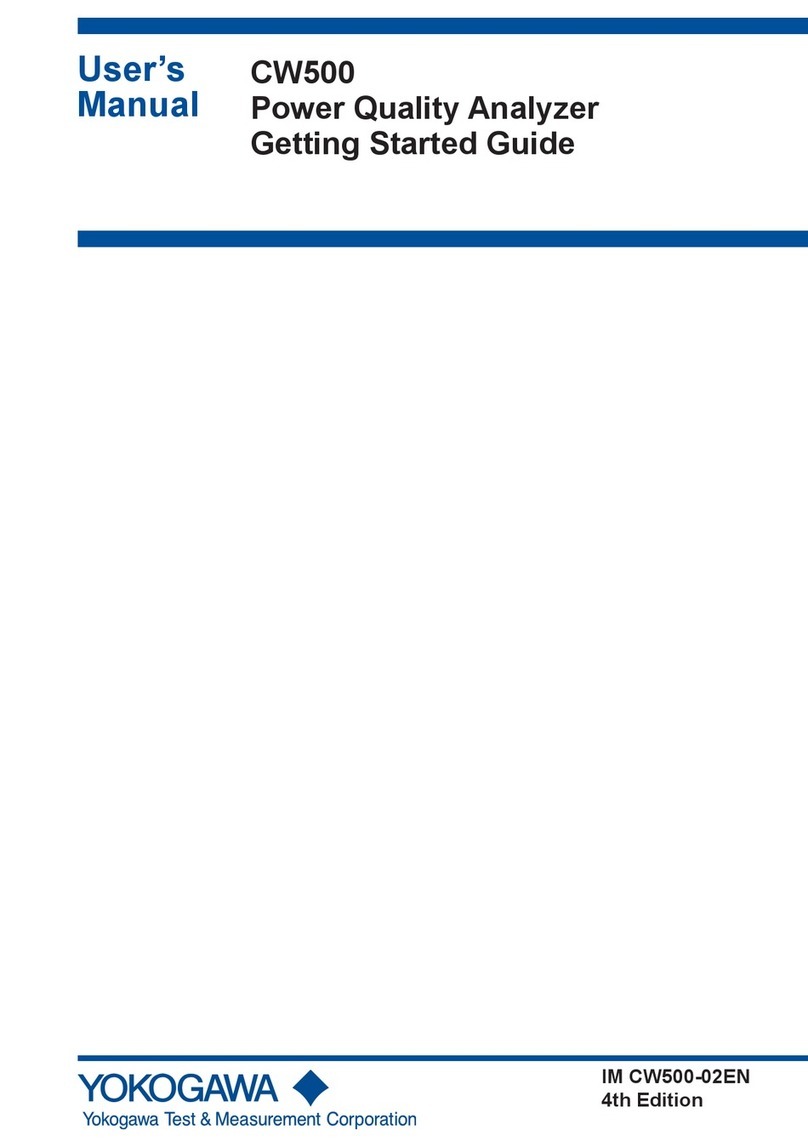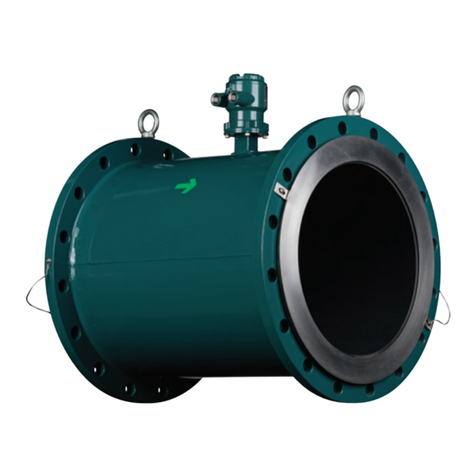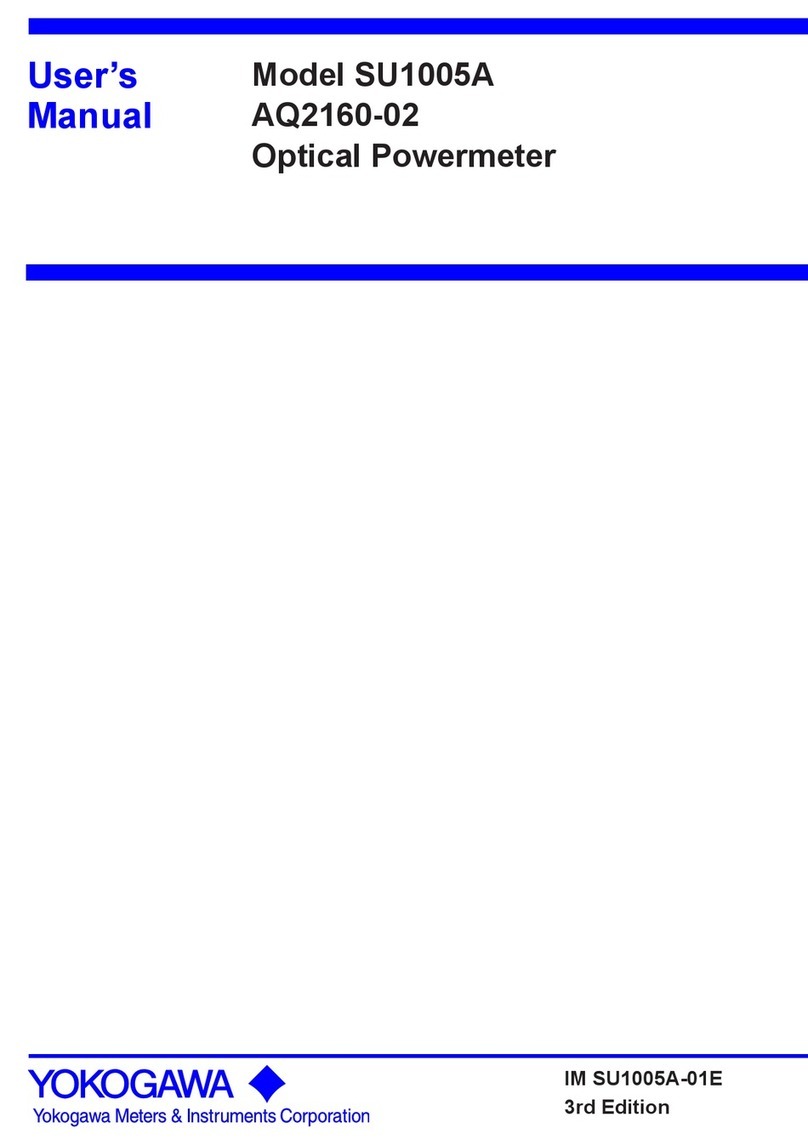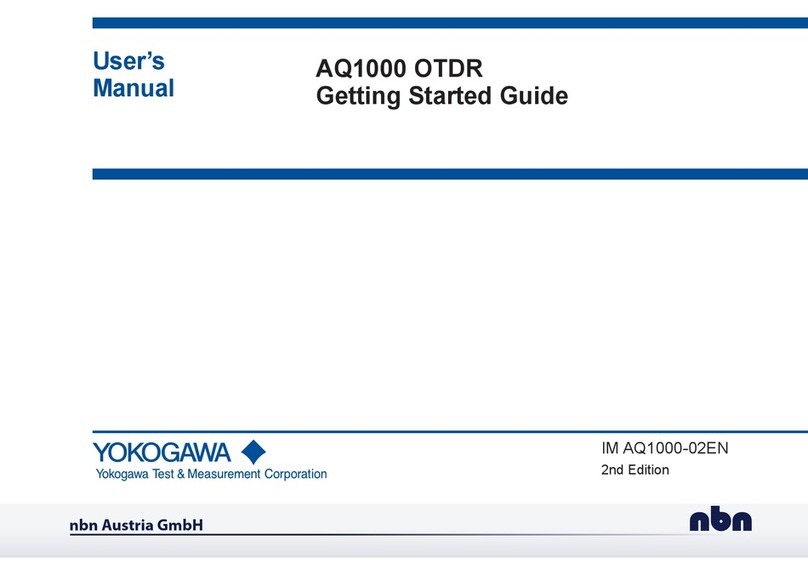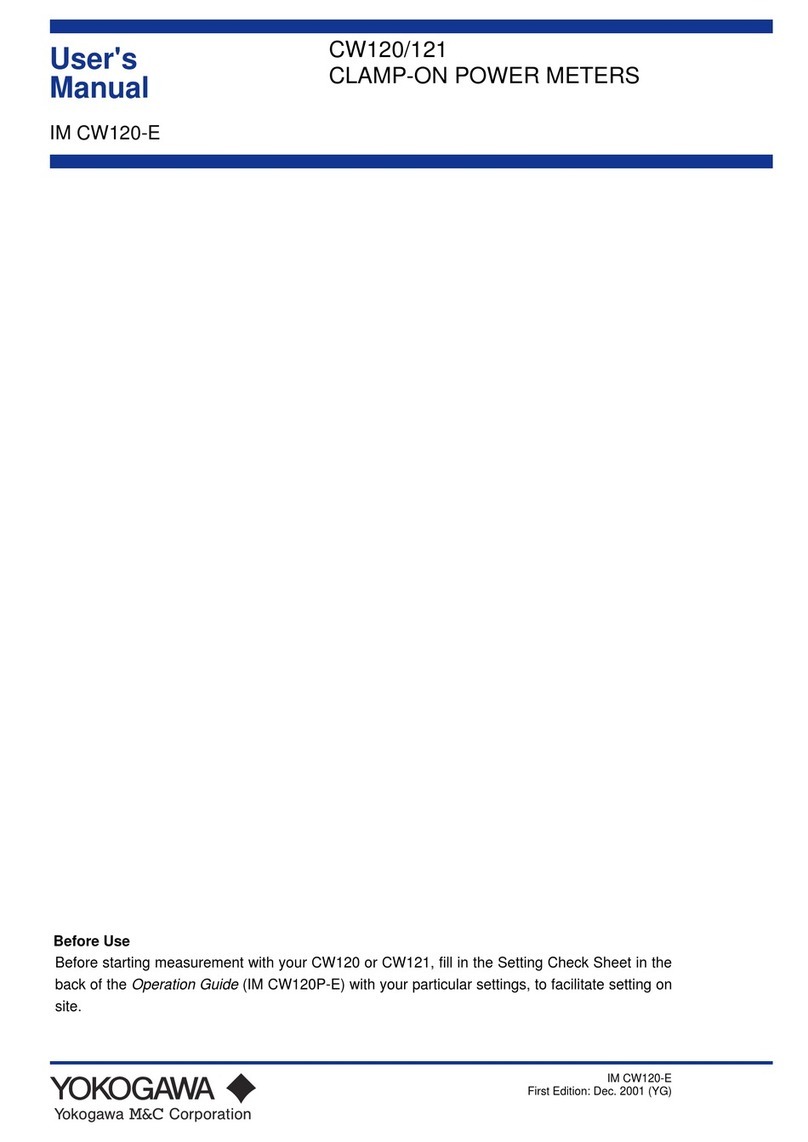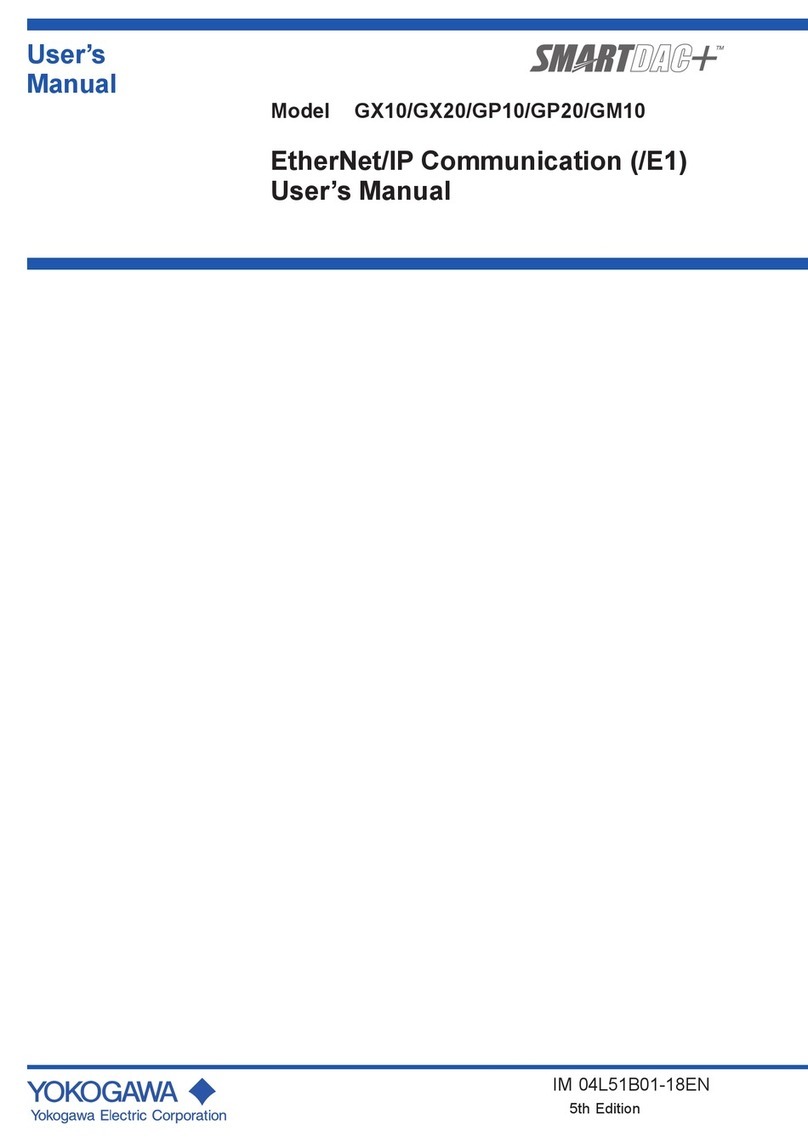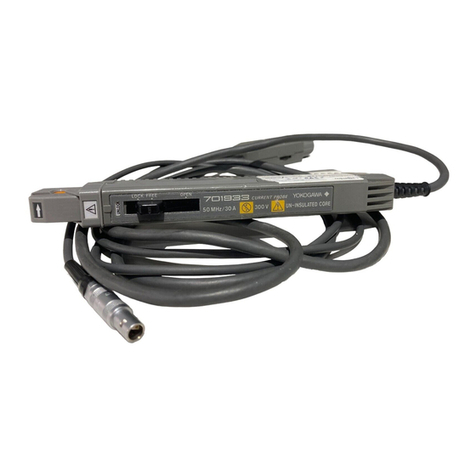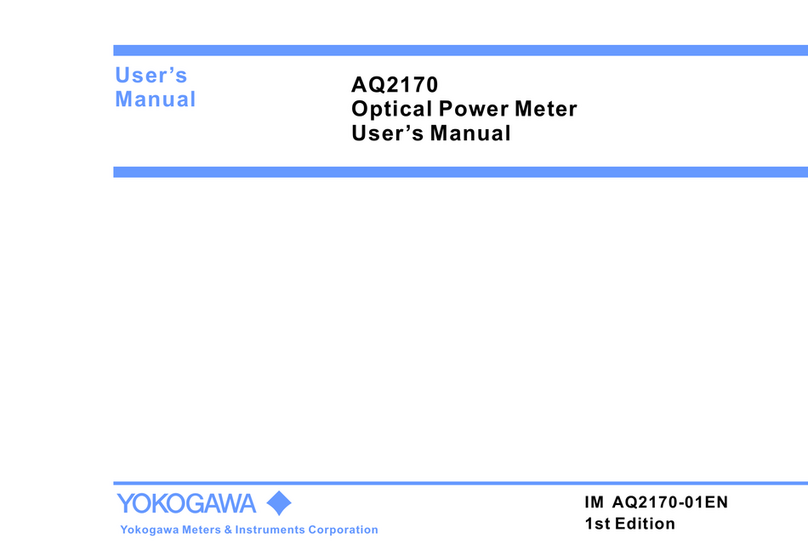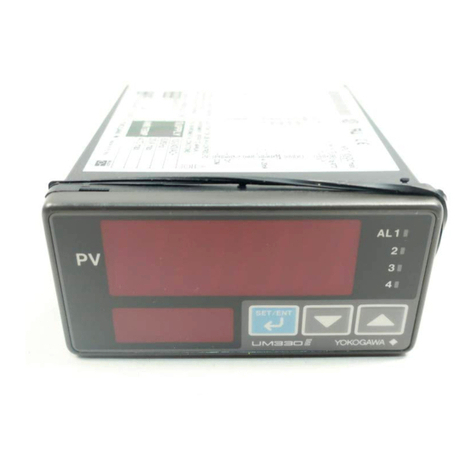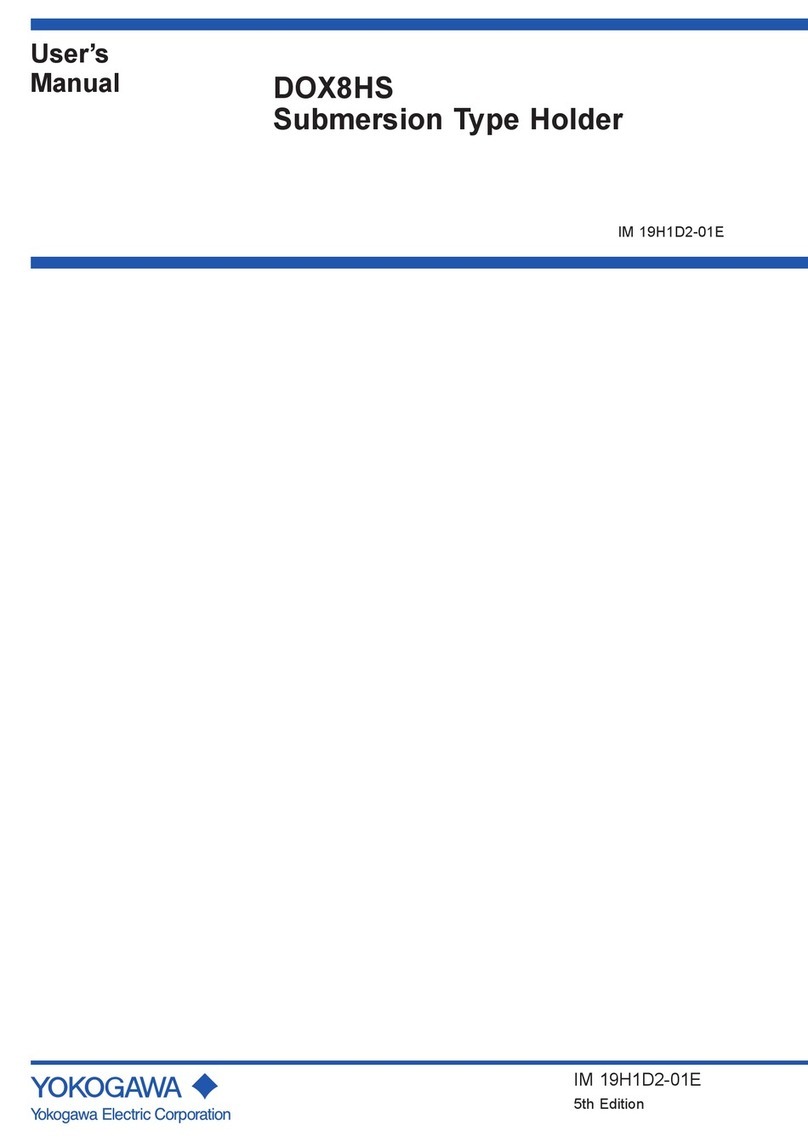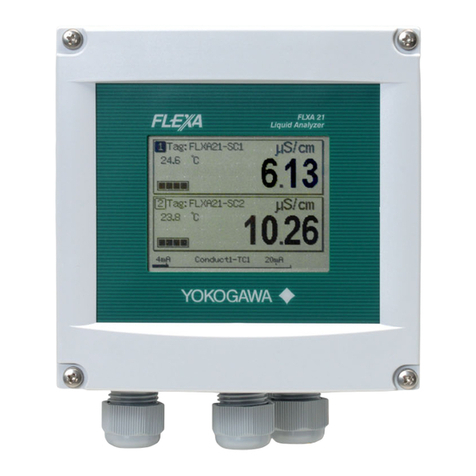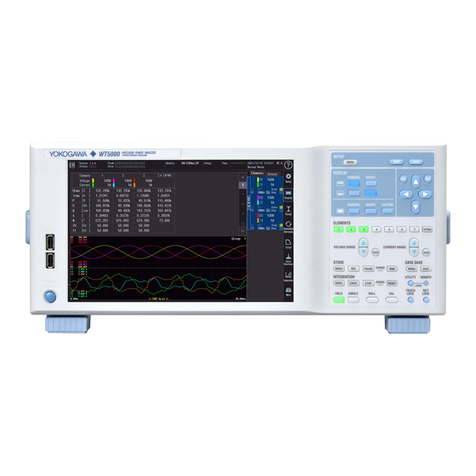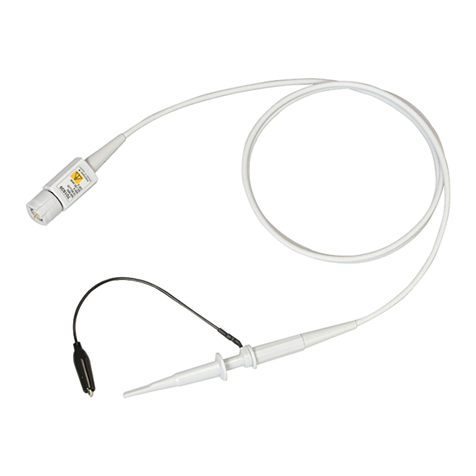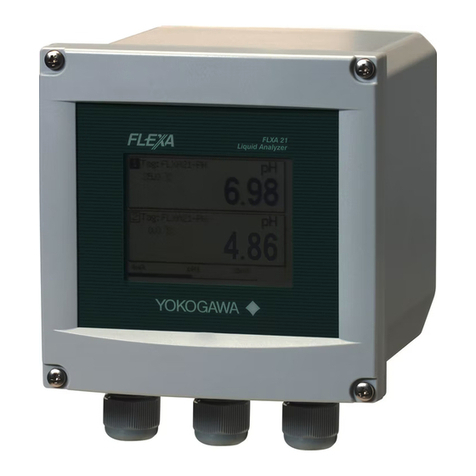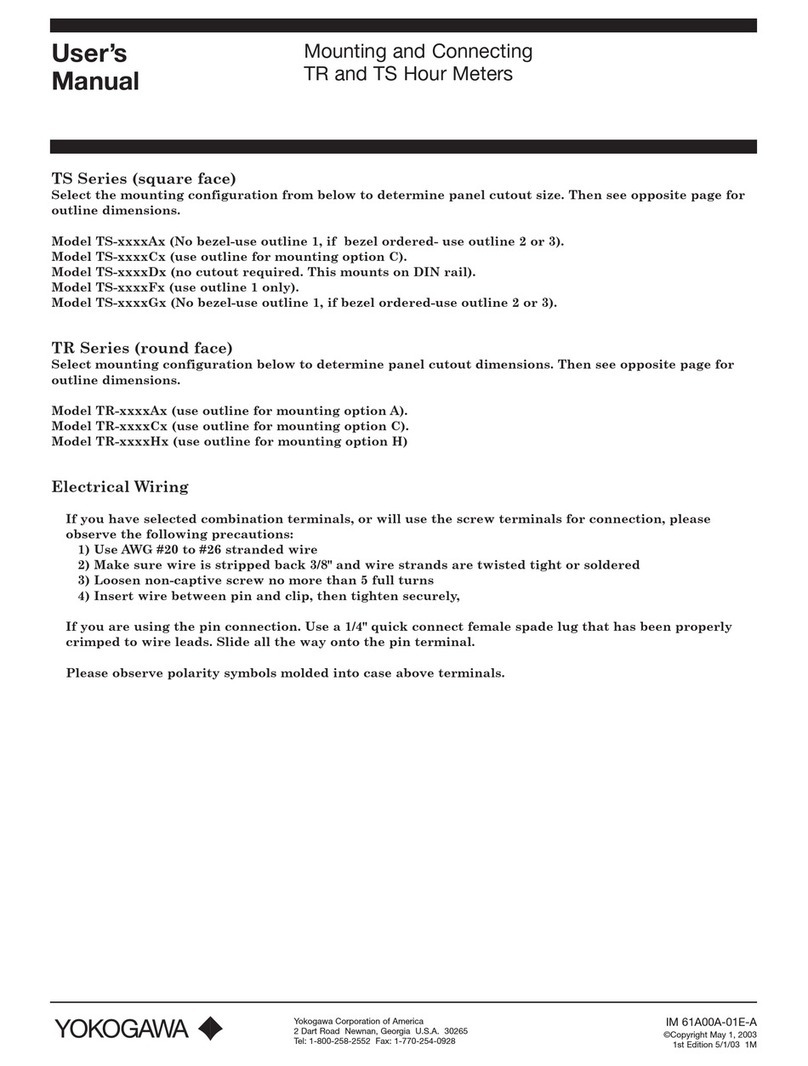
■Connecting the RS-232-C Interface Cable
When connecting this instrument to a personal computer, see the following descriptions and make sure that the setups (data
transmission speed, data format, etc.) between the instrument and computer match. Also, make sure that the correct interface
cable meeting the specifications for this instrument is used.
●Connector Pin Assignment
RS-232-C Connector (DELC-J9PAF-13L6)
(D-Sub 9-pin male connector on the instrument)
21 3 4 5
6 7 8 9
2 BB(RXD; Received Data) : Data received from personal computer
3 BA(TXD; Transmitted Data) : Data transmitted to personal computer
5 AB(GND; Signal Ground) : Ground for signals
Pins 1, 4, and 6 through 9 are not used.
Signal direction : Input
Signal direction : Output
●Directions of Signals
The figure below shows the directions of the signals used by the RS-232-C interface.
2
3
Personal
computer MT10
SD (transmitted data)
RD (received data)
●Table of RS-232-C Standard Signals and Their CCITT and JIS Abbreviations
Pin No.
(9-pin connector)
Abbreviation Signal
RS-232-C CCITT JIS
5
3
2
AB(GND)
BA(TXD)
BB(RXD)
102
103
104
SG
SD
RD
Signal ground
Transmitted data (output)
Received data (input)
■Programming
●Commands Corresponding to Functions
Function Command Data
Zero calibration
Measured-data transmission
0,0,18,12,64,10,10,0,32,32,32,32,32,48,46,48,160
0,0,18,4,128,1,40,0,191
●Format of Output When Receiving Measured-data Transmission Command
Request to MT10 : Computer converts command data to characters and sends them.
Reply from MT10 : Computer reads measured values sent.
******** (8 bytes) (8 bytes) (8 bytes) *
Name Data Aux. data
Name : INPUT (The space is filled with blanks.)
Data : Measurement (The space is filled with blanks.)
Aux. data : Pressure unit (The space is filled with blanks.)
Asterisk (*): Each denotes a one-byte character (which is meaningless to the user-to be ignored).
<Note> The carriage return (CR) or linefeed (LF) code is not output.
●Sample Programs (Quick Basic Version 4.5)
Computer : IBM PC/AT and compatible system with serial port
1. Execute Zero Calibration
1000 ‘************************************
1010 ‘ EXECUTE ZERO CALIBRATION
1020 ‘
1030 ‘ SAVE “MT10ZCL2.BAS”,A
1040 ‘************************************
1050 INPUT “EXECUTE ZERO CALIBRATION. (Y/N) >> “,Q$
1060 IF Q$=”N” OR Q$=”n” THEN 1160
1070 IF Q$<>”Y” AND Q$<>”y” THEN 1050
1080 ‘
1090 TX$=CHR$(0)+CHR$(0)+CHR$(18)+CHR$(12)+CHR$(64)+CHR$(10)+CHR$(10)+CHR$(0)
1100 TX$=TX$+CHR$(32)+CHR$(32)+CHR$(32)+CHR$(32)+CHR$(32)+CHR$(48)+CHR$(46)+CHR$(48)+CHR$(160)
1110 ‘
1120 OPEN “COM1:1200,N,8,1,DS0,CS0,LF” AS #1
1130 PRINT #1,TX$;
1140 CLOSE #1
1150 PRINT “COMPLETED.”
1160 END
2. Read Measured Data 100 Times
1000 ‘************************************
1010 ‘ READ MEASURED DATA 100 TIMES
1020 ‘
1030 ‘ SAVE “MT10MES2.BAS”,A
1040 ‘************************************
1050 INPUT “READ MEASURED DATA 100 TIMES. (Y/N) >> “,Q$
1060 IF Q$=”N” OR Q$=”n” THEN 1200
1070 IF Q$<>”Y” AND Q$<>”y” THEN 1050
1080 ‘
1090 TX$=CHR$(0)+CHR$(0)+CHR$(18)+CHR$(4)+CHR$(128)+CHR$(1)+CHR$(40)+CHR$(0)+CHR$(191)
1100 ‘
1110 OPEN “COM1:1200,N,8,1,DS0,CS0,LF” AS #1
1120 FOR J=1 TO 100
1130 PRINT #1,TX$;
1140 A$=INPUT$(33,#1)
1150 B$=MID$(A$,9,24)
1160 PRINT B$
1170 FOR I=1 TO 10000 : NEXT I
1180 NEXT J
1190 CLOSE #1
1200 END
6. Maintenance and Calibration (See CAUTIONS 6 through 9)
■Storage Conditions
●The following conditions must be met when storing this instrument:
Ambient temperature: -20 to 70 °C; ambient humidity: 5 to 95 % RH or less
●Avoid storing this instrument in any of the following locations:
Damp places; in direct sunlight; near heat sources; where the level of mechanical vibration is high; where an excessive
amount of dirt, dust or salinity is present; where corrosive gases may be present
■Cleaning the Instrument
Cleaning the instrument with a volatile solvent such as a thinner or benzene may cause discoloration. Use a damp cloth
moistened with water or alcohol to wipe the instrument carefully.
■Calibration
The calibration guarantee period of this instrument is one year. Periodic calibration is recommended for correct use of the
instrument. For calibration, please contact your nearest Yokogawa representative, listed on the back cover of this manual.
■Blank Display at Power-on (When Operating on Batteries or AC Power Supply)
Replace all four batteries with new ones at the same time, and then switch the manometer on.
If the problem still persists, contact your nearest Yokogawa representative, listed on the back cover of this manual.
■Troubleshooting
Error Code Cause of Error Countermeasure
Er.01 Sensor failure
Needs repair. Immediately turn off the power and
contact your nearest Yokogawa representative, listed on
the back cover of this manual.
Er.02 Circuit failure
Needs repair. Immediately turn off the power and
contact your nearest Yokogawa representative, listed on
the back cover of this manual.
Er.03 Input exceeds measuring range Check the input value.
Er.08 Measured value exceeds high/low limits Check the input value.
Er.12 Zero point shifting widely Readjust the zero point.
Er.07 Input exceeds measurment display range Turning the wrench clockwise, adjust the display reads
0.
*If the other error codes are displayed, please contact your YOKOGAWA sales representative.
7. Specifications
■General Specifications ■Model Specification
*1: Reference conditions: positioned horizontally, temperature 23°±3°C,
and immediately after zero calibration.
Model
265302 265303 265304
Pressure Type Gauge pressure
0 to 130 kPa 0 to 700 kPa 0 to 3000 kPa
-2.5 to 110% of measuring range
Accuracy*
1
±(0.04% of rdg +
0.03% of FS) ±0.1% of FS
Resolution
0.01kPa 0.1kPa 1kPa
Maximum
Allowable Input
500kPa 1000kPa 4500kPa
Internal Capacity
Approx. 2 cm
3
Temperature
Coefficient
Zero drift ±0.02% of FS/10°C
Span drift ±0.02% of FS/10°C
Effect of
Mounting
Direction
±0.1% of FS ±0.02% of FS ±0.01% of FS
Gas Leakage 10
-5
cm
3
/s max
Gases only (non-flammable, non-explosive, non-toxic, and non-corrosive gases)
5°to 50°C
Pressure Sensor
Silicon resonant sensor
Pressure
Sensing
Element
Diaphragm
kPa, kgf/cm
2
, mmH
2
O, mmHg, inH
2
O, inHg, psi or mbar
Calibration
Interval 1 year
Input Connection
Rc1/4 female or NPT1/4 female
Material of
measurement
section
Japanese Industrial Standard SUS316 stainless steel; Hastelloy C276
0 to 1.3256 kgf/cm
2
0 to 7.138 kgf/cm
2
0 to 30.59 kgf/cm
2
0 to 13256 mmH
2
O
0 to 975.1mmHg 0 to 5250 mmHg
0 to 521.9 inH
2
O0to 2810 inH
2
O0to 12044 inH
2
O
0 to 38.39 inHg 0 to 206.7 inHg 0 to 885.9 inHg
0 to 18.86 psi 0 to 101.5 psi 0 to 435.1 psi
0 to 1300 mbar 0 to 7000 mbar 0 to 30 bar
(one specified upon shipment)
265302
Mini manometer (130 kPa)
Mini manometer (700 kPa)
Mini manometer (3000 kPa)
-U1 kPa
-U2 kgf/cm
2
-U3 mmH
2
O
-U4 mmHg
-P1 Rc1/4 female
-P2 NPT1/4 female
-U5
-U6
-U7
-U8
inH
2
O
inHg
psi
Pressure
Display
Unit *
2
Input Connection
Model
265302
265303
265304
· · · · · · · · · ·
· · · · · · · · · ·
· · · · · · · · · ·
Suffix Code
Specification(s)
Measuring
Range (with
guranteed
accuracy)
■ External Dimensions
72
6012174
Pressure
Display
Unit
*2
Measurement
Fluid
Measurement
Fluid Temperature
Measurement
Display Range
mbar (bar *
3
)
*3: For Model 265304 only
*2: The specification U3 is not available for Model 265303.
For Model 265304, the specifications U3 and U4 are
not available.
■Complying Standard
General Safety EN61010-1: 1993/A2: 1995
SEMKO Certified
EMC: EN55011(1991), EN55022(1994), EN50082-1(1992), EN61000-4-2(1995)
SEMKO Verified
The influence under the immunity environment is +/-30% of FS.
■Common Specifications
Power Supply: AA-size batteries; four 1.5-V primary batteries or four 1. 2-V secondary batteries (will last for approximately 100 continuous
hours if alkaline batteries are used), AC adapter (100-120/220-240 V AC, 50/60 Hz, with 15 V/1.33 A output); optional
Communication: RS-232-C
Transmission: half-duplex "brain" protocol
Baud rate: 1200 bps
Display: 4.5 digits, LCD
Display Update Interval: approximately 0.5 second
Response: approximately 4 seconds (before the reading falls within the given accuracy)
Other Functions: Hold function that retains the on-display pressure reading, Zero-point adjustment
Warm-up Time: one minute maximum
Insulation Resistance: 500 V DC, 20 MΩMIN. (between the AC power line and case), when the dedicated AC adapter is used
Withstanding Voltage: 1500 V AC/one minute (between the AC power line and case), when the dedicated AC adapter is used
Operating Temperature/Humidity Range: 5 to 40 °C, 20 to 80 % RH (non-condensing)
Storage Temperature/Humidity Range: -25 to 70 °C, 5 to 95 % RH
External Dimensions/Weight: approximately 72 (W) x 174 (H) x 60 (D)(mm), excluding the input connection/approximately 700 g
■Standard Accessories
*: Part no. A1070EB specifies only one AA battery.
Accessory Part or Model No.
1 Carrying case B9926CZ 1
2 Alkaline AA-size A1070EB* 4
3 Monkey spanner B9926CX 1
4 Single-ended wrench B9926CW 1
5 Hexagon wrench B9926CY 1
6 Duct tape X9910DG 1
- User's manual IM 265301-01E 1
Quantity Specification(s)
1.5 V DC
-
H2.5
H19
150 mm
This manual
1
2
3
4
5
6
■Optional Accessories
Accessory
(1)
1
1
1
1
1
Quantity 7
8
9
10
11
7
8
9
10
11
366969
B9310RR
B9310ZH
G9612BG
G9612BJ
G9612BW
Part or Model No. Specification Code
Connector assembly (for a vinyl tube with inner
diameter of 4 mm and outer diameter of 6 mm)
Simple connector assembly (for a vinyl tube with
inner diameter of 4 mm and outer diameter of 6 mm)
-
Adapting connector (JIS, R1/4-to-Rc1/8)
Adapting connector (ANSI, R1/4-to-1/4NPT
female thread)
Adapting connector (ANSI, R1/4-to-1/8NPT
female thread)
-D: UL/CSA Standard
-F: VDE Standard
-R: SAA Standard
-Q: BS Standard
AC power supply kit
